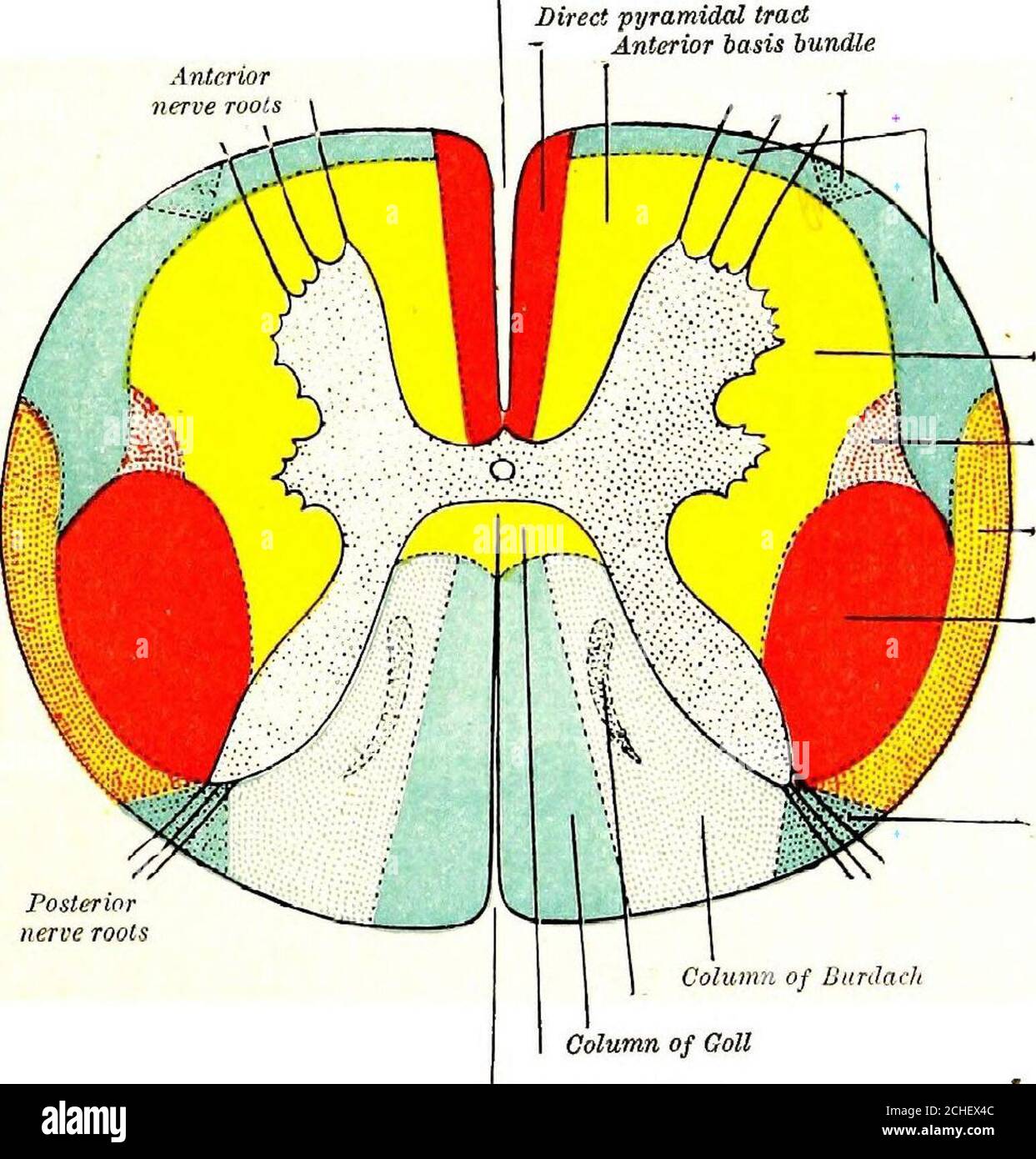. The nervous system: an elementary handbook of the anatomy and physiology of the nervous system for the use of students of psychology and neurology . swhich constitute them run for varying distances from one part of thecord to another, some connecting adjacent segments, others running com-paratively long distances in the cord. Some of the fibres convey impulsesupwards, others downwards (Fig. 37). The long tracts extend between the brain and spinal cord. Those whichconvey impulses upwards towards the brain are termed ascending tracts— THE SPINAL GORD 37 they are mainly sensory ; conversely, th

Image details
Contributor:
Reading Room 2020 / Alamy Stock PhotoImage ID:
2CHEX4CFile size:
7.1 MB (371.2 KB Compressed download)Releases:
Model - no | Property - noDo I need a release?Dimensions:
1546 x 1616 px | 26.2 x 27.4 cm | 10.3 x 10.8 inches | 150dpiMore information:
This image is a public domain image, which means either that copyright has expired in the image or the copyright holder has waived their copyright. Alamy charges you a fee for access to the high resolution copy of the image.
This image could have imperfections as it’s either historical or reportage.
. The nervous system: an elementary handbook of the anatomy and physiology of the nervous system for the use of students of psychology and neurology . swhich constitute them run for varying distances from one part of thecord to another, some connecting adjacent segments, others running com-paratively long distances in the cord. Some of the fibres convey impulsesupwards, others downwards (Fig. 37). The long tracts extend between the brain and spinal cord. Those whichconvey impulses upwards towards the brain are termed ascending tracts— THE SPINAL GORD 37 they are mainly sensory ; conversely, the descending tracts carry impulsesdownwards in the cord and are largely motor. There are several minor tractsbelonging to this series, but it will be sufficient to indicate the more importantones, viz. :— Descending (Direct pyramidal tracts.1 Crossed pyramidal tracts. Ascending f Columns of Goll and of Burdach.I Direct cerebellar tracts. Fig. 37.—Diagram of the tracts in the spinal cord. References are given only to thetracts described in the text. Anterior median fissure Direct pijramidcU tract Anterior basis bundle Anteriornerve roots . Lateral basisbundle L/l^^^.rZ.f^^^ C^ t Direct cerebellartract pyramidal tract Posteriornerve Tools Column of BarJach1 Column of GollPosterior median fissure Pyramidal Tracts.—The pyramidal tracts are the axons of nerve cellssituated in the surface or cortex of the cerebral hemispheres. They extenddown through the brain, one on either side, till they reach the medulla wherethey undergo partial decussation. One portion of each tract crosses to theopposite side and runs down in the lateral part of the cord between the anteriorand posterior horns as the crossed pyramidal tract. The remainder of eachtract passes down on its own side on the mesial aspect of the anterior horn 38 THE NERVOUS SYSTEM Fig. 38.—Decussation of pyramids. Schemeshoving passage of various tracts fromcord to medulla. (Testut.) as the direct pyramidal tract (Fig. 3